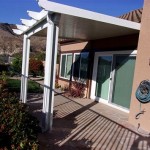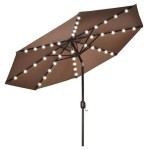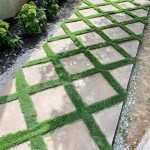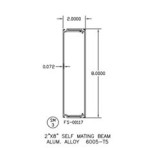How Much Does a Paver Patio Cost to Install?
Installing a paver patio can significantly enhance the aesthetic appeal and functionality of outdoor living spaces. Paver patios offer durability, design flexibility, and relatively low maintenance compared to other patio materials. However, understanding the various cost factors involved is crucial for effective budgeting and project planning. This article will provide a detailed breakdown of the elements influencing the total cost of paver patio installation.
The cost of installing a paver patio is not a fixed figure. It varies widely based on several factors, including the size of the patio, the type and quality of pavers selected, the complexity of the design, site preparation requirements, and geographical location. Understanding these factors is essential for obtaining accurate estimates and making informed decisions throughout the project.
Key Factors Influencing Paver Patio Installation Costs
The overall cost of a paver patio installation is influenced by a combination of material, labor, and site-specific considerations. Each of these categories contributes significantly to the final price, and understanding their individual impact can help homeowners manage their budgets effectively.
1. Paver Material Costs: The selection of pavers plays a pivotal role in determining the overall cost. Pavers come in a wide range of materials, including concrete, brick, natural stone, and porcelain. Each material has distinct characteristics, aesthetic qualities, and price points.
Concrete pavers are generally the most affordable option, offering a balance of durability and cost-effectiveness. They are available in various shapes, sizes, and colors, mimicking the look of more expensive materials at a fraction of the price. The cost of concrete pavers can range from $3 to $10 per square foot, depending on the style, texture, and manufacturer.
Brick pavers offer a classic, timeless aesthetic and are known for their durability and longevity. They are typically more expensive than concrete pavers, ranging from $8 to $15 per square foot. The higher cost reflects the manufacturing process and the inherent appeal of natural clay.
Natural stone pavers, such as flagstone, slate, and travertine, are the most expensive option, offering a unique, upscale look. The cost of natural stone pavers can range from $15 to $30 per square foot, depending on the type of stone, its thickness, and its availability. The natural variations in color and texture provide a distinctive character that cannot be replicated by manufactured materials.
Porcelain pavers are a relatively newer option for patio surfaces. They are known for their durability, resistance to staining and fading, and slip-resistant properties. Porcelain pavers often mimic the look of natural stone or concrete but offer enhanced performance characteristics. The cost of porcelain pavers typically ranges from $8 to $20 per square foot.
The choice of paver material should align with the homeowner's budget, aesthetic preferences, and functional requirements. Factors such as the desired level of durability, maintenance needs, and overall design style should be considered when selecting the appropriate paver material.
2. Labor Costs: Labor constitutes a significant portion of the overall paver patio installation cost. The complexity of the design, the size of the patio, and the site conditions all influence the amount of labor required. Labor costs typically range from $5 to $15 per square foot, but this can vary depending on the region and the contractor's experience.
Site preparation is a crucial aspect of paver patio installation. It involves clearing the area, excavating the soil, and leveling the ground. In some cases, additional work may be required, such as removing existing structures or dealing with drainage issues. Extensive site preparation can increase labor costs substantially.
Laying the pavers is a labor-intensive process that requires skill and precision. The pavers must be carefully placed and aligned to ensure a uniform surface. Intricate patterns and designs can increase the time and effort required for installation, leading to higher labor costs. Cutting pavers to fit edges and corners also adds to the labor time.
Compaction and finishing are essential steps in paver patio installation. Compacting the base material and the pavers themselves ensures stability and prevents settling over time. Finishing touches, such as installing edge restraints and filling joints with sand or polymeric sand, contribute to the overall aesthetic appeal and longevity of the patio.
The experience and expertise of the contractor also influence labor costs. Experienced contractors may charge higher rates, but they can often complete the project more efficiently and with a higher level of quality. Obtaining multiple quotes from different contractors is recommended to compare labor costs and ensure a fair price.
3. Site Preparation and Other Associated Costs: The condition of the installation site can significantly impact the overall cost of a paver patio project. Unforeseen issues, such as poor drainage, tree roots, or buried utilities, can require additional work and increase the expense.
Proper drainage is essential for preventing water damage and ensuring the longevity of the paver patio. If the site has poor drainage, the contractor may need to install drainage systems, such as French drains or surface drains. These systems can add significantly to the overall cost.
Tree roots can interfere with the installation of the paver patio and may need to be removed or rerouted. Removing large tree roots can be a time-consuming and expensive process. Similarly, buried utilities, such as gas lines or electrical cables, can pose challenges and require careful planning and execution.
Permit fees are another potential cost to consider. Depending on the local regulations, a building permit may be required for paver patio installation. Permit fees can vary depending on the size and scope of the project. It is important to check with the local authorities to determine if a permit is necessary.
Edge restraints are typically installed around the perimeter of the paver patio to prevent the pavers from shifting or spreading. Edge restraints can be made from various materials, such as plastic, concrete, or metal. The cost of edge restraints depends on the material and the length required.
Joint sand or polymeric sand is used to fill the gaps between the pavers. Joint sand is a traditional option that is relatively inexpensive. Polymeric sand is a more advanced option that contains polymers that bind the sand particles together, preventing weed growth and erosion. Polymeric sand is more expensive than joint sand, but it offers superior performance.
Delivery fees are charged for transporting the pavers and other materials to the installation site. Delivery fees can vary depending on the distance and the quantity of materials. It is important to factor in delivery fees when calculating the overall cost of the project.
Breaking Down the Cost: A Hypothetical Example
To illustrate the cost breakdown, let's consider a hypothetical example of installing a 200-square-foot paver patio using concrete pavers. We will assume that the site preparation is relatively straightforward and does not require extensive excavation or drainage work.
Paver Material Costs: At an average cost of $6 per square foot for concrete pavers, the total material cost for 200 square feet would be $1,200.
Labor Costs: Assuming a labor cost of $8 per square foot, the total labor cost for installing the patio would be $1,600.
Site Preparation and Other Associated Costs: We will estimate the cost of site preparation, edge restraints, joint sand, and delivery fees at $500.
Total Cost: The total cost of the paver patio installation would be $1,200 (pavers) + $1,600 (labor) + $500 (site preparation and other costs) = $3,300.
Based on this example, the cost per square foot would be $3,300 / 200 = $16.50 per square foot. This is just an example, and the actual cost may vary depending on the specific factors mentioned earlier. Using natural stone pavers would drastically increase the cost per square foot, while using a less experienced installer could potentially reduce labor costs, but potentially result in a lower quality installation.
Ways to Save Money on Paver Patio Installation
While paver patio installation can be a significant investment, there are several ways to reduce the overall cost without compromising quality and durability.
1. Choose Affordable Paver Materials: Selecting concrete pavers over natural stone or brick can significantly reduce material costs. Concrete pavers offer a wide range of styles and colors, and they can be just as durable and aesthetically pleasing as more expensive options.
2. Simplify the Design: Intricate patterns and designs require more labor and can increase the overall cost. Opting for a simpler design, such as a basic rectangular or square patio, can save on labor costs and reduce material waste.
3. Prepare the Site Yourself: If you are physically capable and have the necessary equipment, you can save on labor costs by preparing the site yourself. This involves clearing the area, excavating the soil, and leveling the ground. However, it is important to do this correctly to ensure a stable foundation for the paver patio.
4. Obtain Multiple Quotes: Getting quotes from several contractors allows you to compare prices and negotiate a better deal. Be sure to compare the scope of work and the materials included in each quote to ensure that you are comparing apples to apples. Check online reviews and ask for references to assess the contractor's reputation and experience.
5. Consider a DIY Approach: If you are handy and have experience with similar projects, you may consider installing the paver patio yourself. This can save significantly on labor costs, but it requires careful planning, preparation, and execution. Be sure to research the proper techniques and use the appropriate tools to ensure a successful installation. It is also advisable to start with a smaller, simpler project to gain experience before tackling a larger, more complex paver patio.
Ultimately, the cost of installing a paver patio is a function of material selection, labor input, and site-specific needs. A clear understanding of these variables enables homeowners to make informed decisions and work towards a successful and aesthetically pleasing outdoor space.

How Much Does A Patio Cost Installation 2024 Landscaping Network

How Much Does It Cost To Build A Paver Patio

How Much Does It Cost To Install Patio Pavers In 2024 Paver House

How Much Does A Paver Patio Cost 2024 Data

Paver Cost Landscaping Network

Cost To Install A Patio 2024 Calculator

How Much Does It Cost To Install Patio Pavers Whitehouse Landscaping

Average Flagstone Patio S In 2024 Forbes Home

2024 Patio Cost Average To Build And Install A Angi

Guide How Much Does A Paver Patio Cost In 2024
Related Posts








